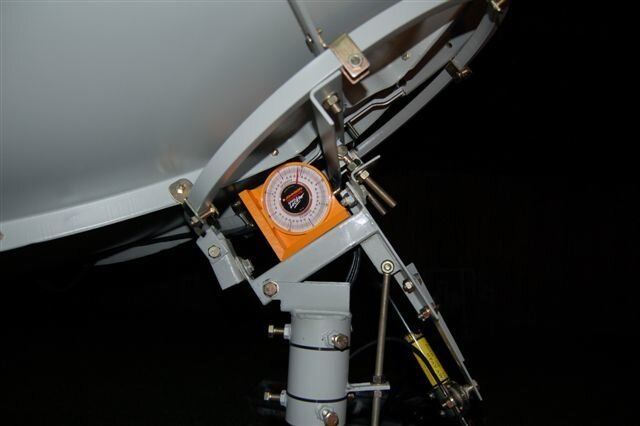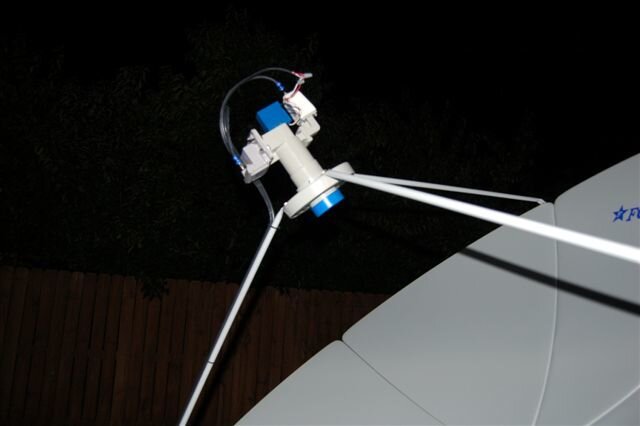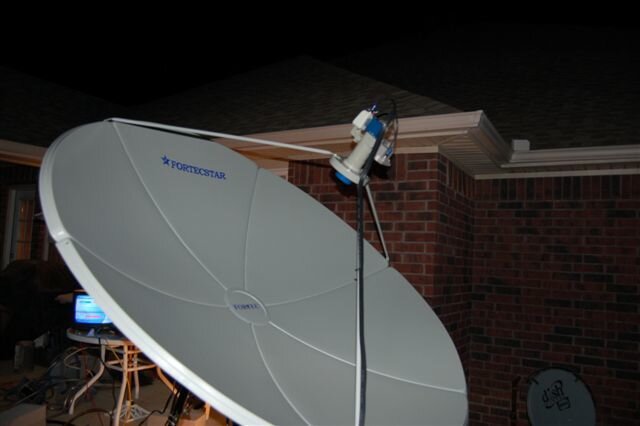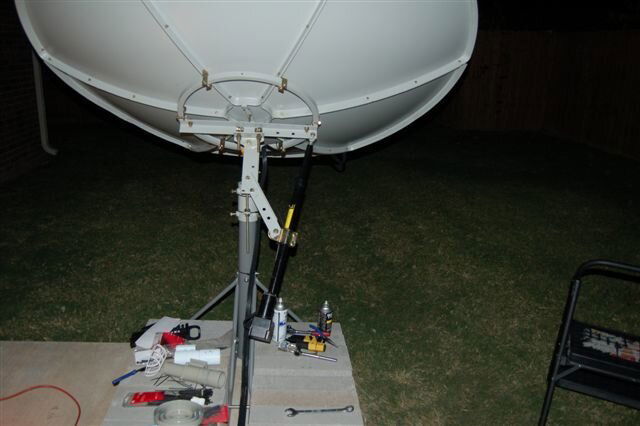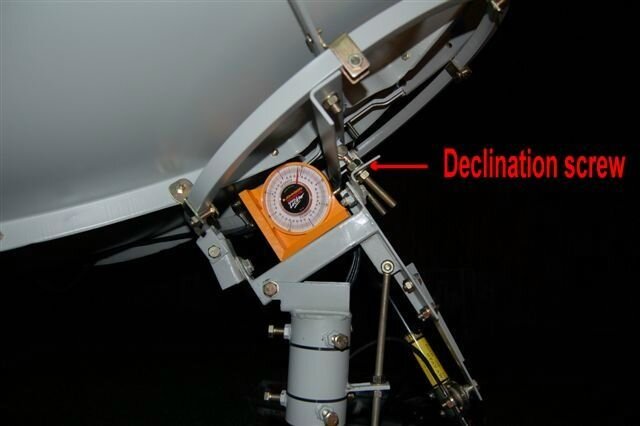I am having a very hardtime installing my new fortec 6ft polar mount dish.I have install many motorized dishes without any problems but this one takes the cake.My zipcode is 72764.My long=94.1w lat=36.1n.I have the dish lineup with my true south which is telstar 5.My polar elevation is set to 36 measured with angle finder on the dish in the enclosed photos.I have a Chaparral Corotor II+ C/Ku Feed with lnb's.When i got everything assembled i pointed the dish towards G16 and checked all tp and got no picture on any tp's.I then slowly move the dish across the clarke's belt and could not get any pictures on my cband analog receiver.I then switched to my coolsat 5000 receiver to see if i had any signal.I had a signal of 94 and a quality signal of 7 on what i think is telstar 5 it is my true south and i have a motorized 1.2 meter dish so i know where to point the dish to get a signal.I first moved the whole mast very slowly to see if i would get a better quality reading on T5.The meter did not change so i raised and lowered the elevation but still no signal.I have double checked all my connections the plumbness of the pole changed lnb's but i cannot get a signal on any satellite.I am enclosing pictures of my install.If anyone see anthing i am doing wrong including my elevation settings please let me here your suggestions.
Attachments
Last edited:


